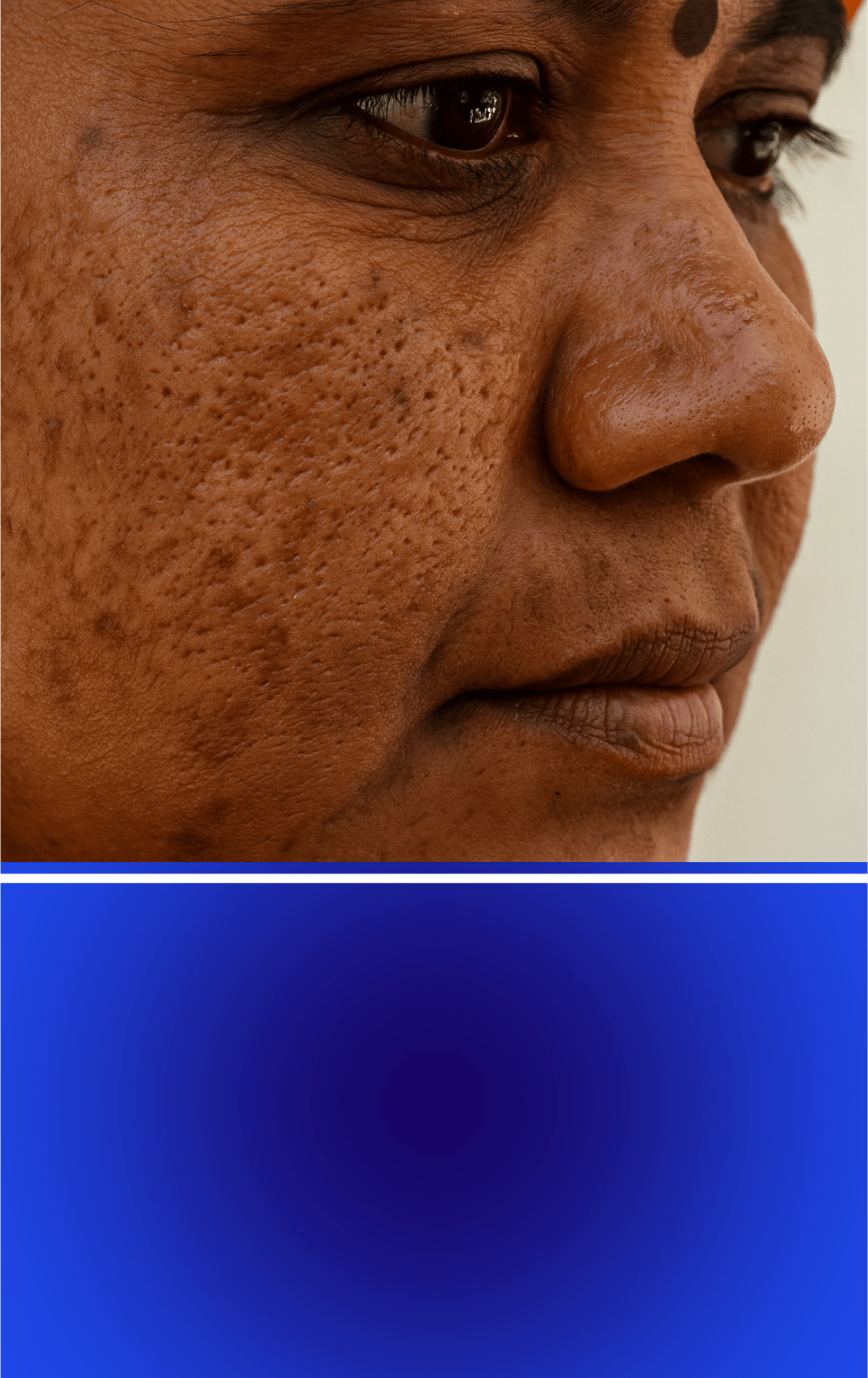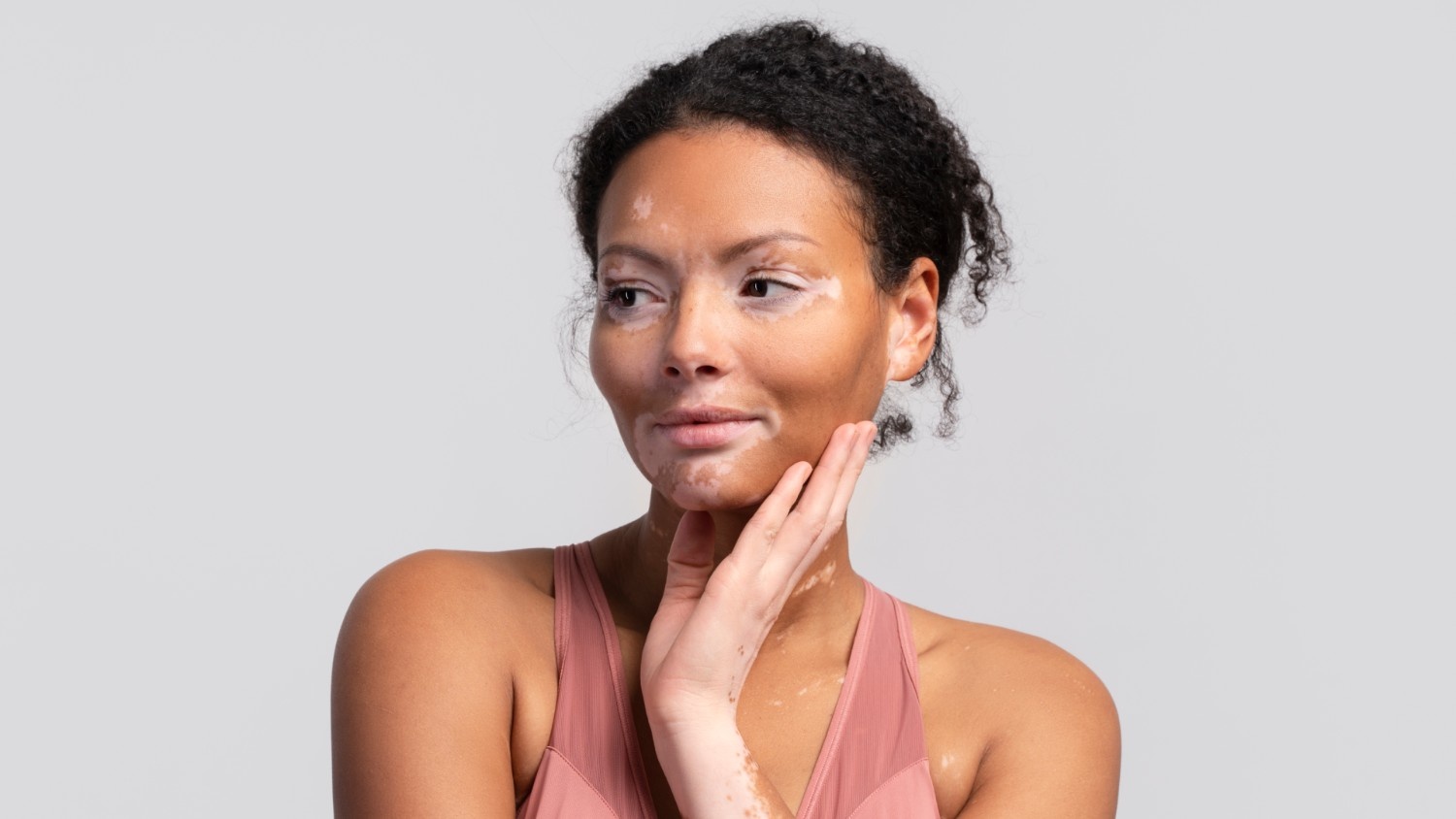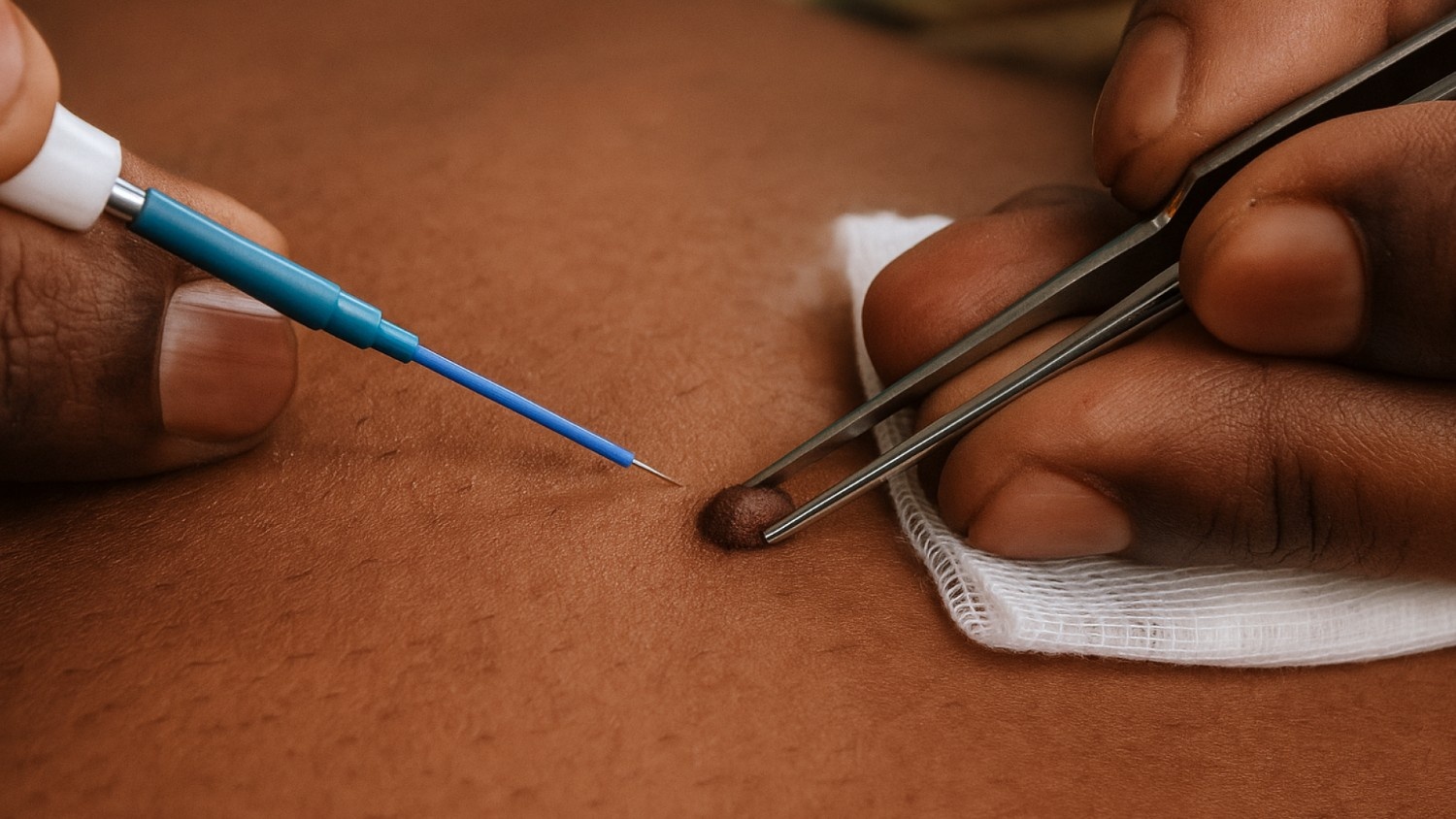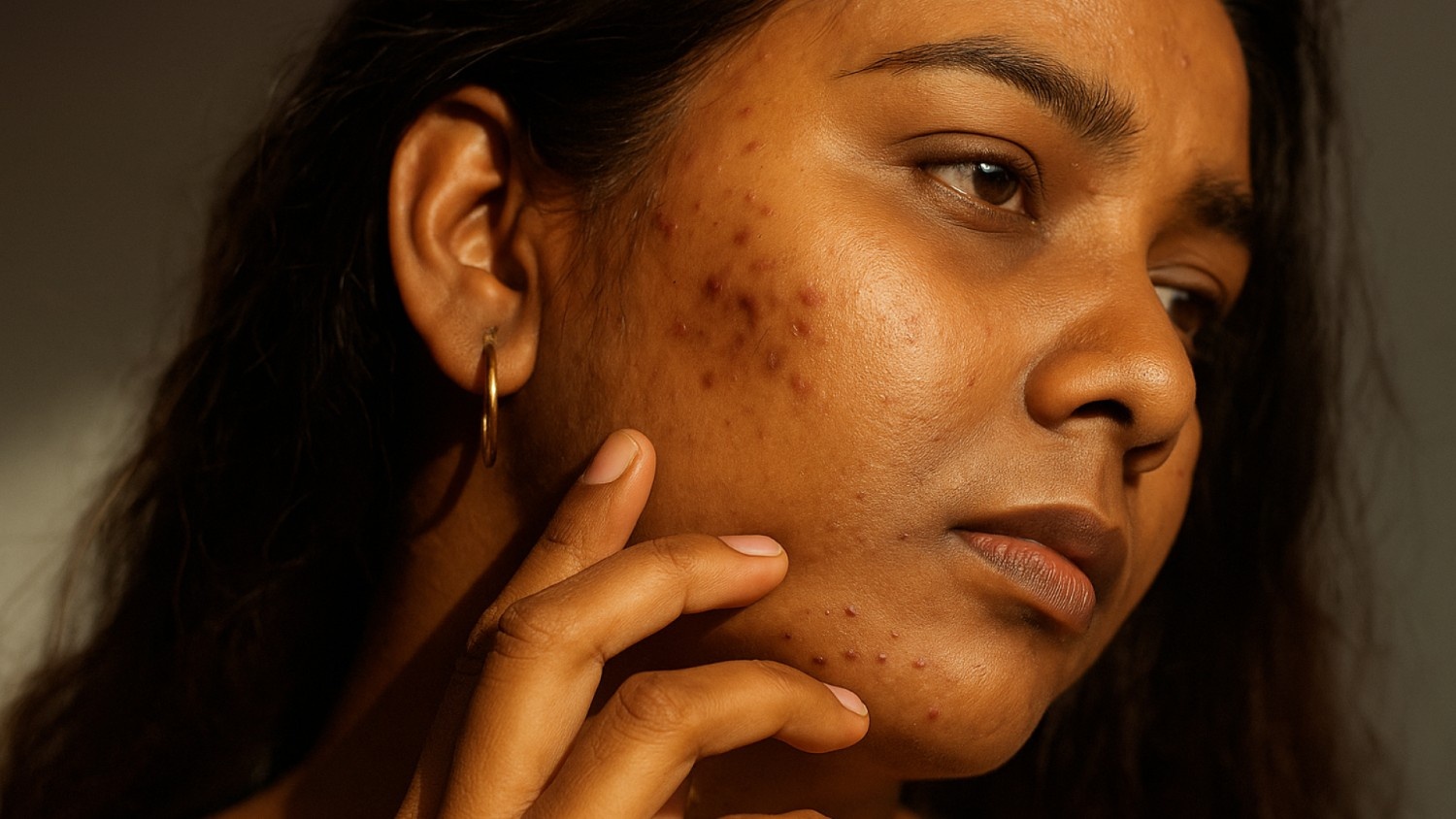Have you ever noticed dark spots on your skin that remain long after acne or an injury has healed? You're not alone. According to the Journal of the American Academy of Dermatology, 15% of the population reported suffering from post-inflammatory hyperpigmentation (PIH), with women (56%) being the most affected, and the average age being 39 years.
While hyperpigmentation may seem like an inevitable skin concern, it is treatable. With the right knowledge and treatments, you can significantly reduce dark spots and achieve a more even skin tone.
In this article, you'll explore the causes, types, and most effective hyperpigmentation treatments, helping you restore your skin's natural glow.
Overview
- Hyperpigmentation occurs due to excess melanin, resulting in dark spots or patches on the skin.
- The main causes include sun exposure, hormonal changes, and skin injuries.
- Types of hyperpigmentation include sunspots, melasma, and post-inflammatory hyperpigmentation (PIH).
- Effective treatments range from home remedies like vitamin C to professional treatments like laser therapy.
- Prevention is key: regular sunscreen use and avoiding sun exposure during peak hours can help manage pigmentation.
What exactly is Hyperpigmentation?
Hyperpigmentation refers to the darkening of the skin caused by an excess production of melanin, the pigment responsible for skin colour. It can appear as dark spots, patches, or an overall uneven skin tone. While it's common and generally harmless, it can affect your confidence and make your complexion look uneven.
Common causes of hyperpigmentation include sun exposure, hormonal changes, and skin injuries like acne. These factors trigger an increase in melanin production, leading to darkened areas.
Understanding the types of hyperpigmentation will help you identify the best pigmentation treatment options. Let's take a closer look at the different types.
What Are the Different Types of Hyperpigmentation?

Knowing the different types of hyperpigmentation is key to selecting the right pigmentation treatment. Each type has its characteristics, and identifying them can help you understand what's affecting your skin.
Here are the different types of hyperpigmentation:
- Age Spots (Sunspots): These brown or tan spots typically appear on areas that have been exposed to the sun, like your face, hands, and shoulders. Over time, sun exposure accumulates and triggers melanin production, resulting in these spots.
- Melasma: Characterised by large, brownish patches, melasma often occurs on the face and is typically triggered by hormonal changes, such as during pregnancy or from birth control pills. It's more common in women and tends to worsen with sun exposure.
- Post-inflammatory Hyperpigmentation (PIH): PIH develops after skin injury or inflammation, such as from acne or cuts. As the skin heals, excess melanin is produced, leading to dark spots that remain long after the injury has healed.
- Freckles: Freckles are small, light to dark brown spots that commonly appear on people with fair skin. They are usually caused by sun exposure and are more prevalent in individuals with a genetic predisposition to developing them.
- Solar Lentigines: Often confused with age spots, these dark spots are caused by long-term sun exposure. They are more common in adults and appear as flat, brown or black spots on areas frequently exposed to the sun, like the face, hands, and arms.
Understanding these types of hyperpigmentation will help you identify the triggers and choose the most suitable treatment for your skin. Let's now look at the causes that can lead to these dark patches.
What Causes Hyperpigmentation?

Hyperpigmentation occurs when the skin produces an excess amount of melanin, leading to darkened patches or spots. Several factors can trigger this overproduction of melanin, from sun exposure to hormonal shifts and skin injuries. Understanding these causes is crucial for managing and preventing hyperpigmentation effectively.
Here are the primary causes of hyperpigmentation:
1. Sun Exposure
UV rays from the sun stimulate melanin production, leading to age spots and freckles, especially in areas like your face, shoulders, and hands. Prolonged sun exposure without protection significantly increases the risk of hyperpigmentation.
2. Hormonal Changes
Pregnancy, birth control pills, or hormonal imbalances can trigger melasma, causing dark patches, often on the face. Hormonal fluctuations increase melanin production, which worsens with sun exposure.
3. Skin Injuries
Acne, cuts, or any form of inflammation can lead to post-inflammatory hyperpigmentation (PIH). As the skin heals, excess melanin is produced, leaving behind dark spots that persist even after the injury is gone.
4. Medications
Certain medications, such as birth control pills or hormone replacement therapy, can trigger melasma or other pigmentation disorders due to hormonal changes. If you're on medication, it's important to be mindful of any pigmentation changes.
5. Genetics
Some individuals are genetically predisposed to develop freckles or other types of pigmentation, especially those with lighter skin tones. Your family history can play a significant role in how your skin reacts to sun exposure and other environmental factors.
Now that you understand the causes of hyperpigmentation, let's explore the different types and how they impact your skin.
How Can You Treat Hyperpigmentation at Home

Treating hyperpigmentation at home is often the first step for many individuals looking to improve their skin tone. Over-the-counter products and natural remedies can work effectively to lighten dark spots and even out your complexion. With consistent use, these treatments can help fade pigmentation without the need for invasive procedures.
Here are some home remedies you can try to treat hyperpigmentation:
- Alpha Hydroxy Acids (AHAs): AHAs like glycolic acid help exfoliate the skin, removing dead cells and promoting skin renewal. Regular use can reduce dark spots and improve skin texture by sloughing off the outer layer.
- Vitamin C Serum: Known for its brightening properties, vitamin C helps to inhibit melanin production and reduce discolouration. It's a powerful antioxidant that also protects the skin from further damage caused by free radicals.
- Liquorice Extract: Liquorice extract contains glabridin, which is known to inhibit melanin production. It can help lighten dark spots, particularly those caused by sun exposure or inflammation, and is a gentle option for sensitive skin.
- Niacinamide: This ingredient, also known as vitamin B3, is effective for treating hyperpigmentation. It helps to lighten dark spots by reducing melanin production and has anti-inflammatory properties that can calm irritated skin.
- Aloe Vera: Aloe vera has natural depigmenting compounds that can lighten dark spots. It also soothes and hydrates the skin, making it a great option for sensitive skin types dealing with pigmentation.
With consistent use of these remedies, you can see significant improvements in your skin's appearance. If home treatments aren't effective, professional treatments might be a good next step to explore.
What Professional Treatments Can Help with Hyperpigmentation?

When home remedies or over-the-counter products aren't enough to address stubborn hyperpigmentation, professional treatments can provide more effective and quicker results. Dermatologists offer advanced solutions like chemical peels, laser treatments, and microdermabrasion that target deeper layers of the skin for lasting improvements.
Let's explore the professional treatments available for managing hyperpigmentation:
- Chemical Peels: Chemical peels use strong exfoliants to remove the top layers of the skin, which helps to reveal smoother, more even-toned skin beneath. They are effective for treating sunspots, melasma, and post-inflammatory hyperpigmentation.
- Laser Treatments: Laser treatments, such as fractional or Q-switched lasers, specifically target melanin in the skin. These lasers break down dark pigment, helping to fade pigmentation spots and improve skin texture over time.
- Microdermabrasion: This treatment uses fine crystals to exfoliate the skin's surface and remove dead skin cells, improving skin texture and reducing pigmentation. Microdermabrasion is a less invasive treatment that requires little downtime.
- Intense Pulsed Light (IPL) Therapy: IPL uses multiple wavelengths of light to target melanin in the skin. It helps to reduce pigmentation by breaking down the excess melanin in dark spots, leaving your skin with a more even tone.
- Cryotherapy: In cryotherapy, liquid nitrogen is applied to dark spots, freezing and destroying the excess pigment. This treatment is typically used for sunspots and age spots, leaving behind clearer skin.
Looking for professional guidance on treating hyperpigmentation? At Velantis Dermatology, Dr. Janani Sree C M provides personalised care and advanced treatments to target hyperpigmentation, ensuring a treatment plan that's personalised to your skin's unique needs.
Book your appointment today and take the first step towards healthy skin.
If you're looking to manage and prevent hyperpigmentation in the long term, there are simple steps you can take at home. Let’s now explore how you can prevent and manage hyperpigmentation effectively.
How Can You Prevent and Manage Hyperpigmentation?
Preventing and managing hyperpigmentation is all about taking proactive steps to protect your skin from triggers and maintaining a healthy skincare routine. Simple habits like applying sunscreen daily and using gentle skincare products can help reduce the appearance of dark spots and prevent new ones from forming.
Consistency is key, and with the right approach, you can keep hyperpigmentation in check. Here are some ways you can prevent and manage hyperpigmentation effectively:
- Daily Sunscreen Use: Sunscreen is essential for all skin types. UV exposure can worsen hyperpigmentation, making sunscreen your first line of defence. Use a broad-spectrum SPF 30 or higher daily, even on cloudy days.
- Avoid Peak Sun Hours: Sun exposure is most intense between 10 AM and 4 PM. Limiting your time outside during these hours can help reduce the risk of pigmentation. If you must be outside, wear protective clothing and a wide-brimmed hat.
- Healthy Skin Care Routine: Incorporating antioxidants and gentle products into your skincare routine can help maintain skin health and reduce pigmentation. Look for ingredients like vitamin C, niacinamide, and alpha hydroxy acids to brighten the skin.
- Treat Skin Injuries Promptly: Avoid picking at acne or wounds, as this can lead to post-inflammatory hyperpigmentation. If you have acne, consider using treatments that prevent scarring and inflammation.
- Moisturize Regularly: Keeping your skin hydrated helps maintain a healthy skin barrier. Dehydrated skin can lead to uneven pigmentation and worsen existing dark spots, so it's crucial to use a moisturiser suited for your skin type.
By adopting these practices, you can help prevent and manage hyperpigmentation more effectively. If these steps aren't enough, a dermatologist can offer more targeted treatments.
How Can a Dermatologist Help Manage Hyperpigmentation

A dermatologist can provide a more targeted and effective approach to managing hyperpigmentation by using advanced technology and customised treatments. At Velantis Dermatology, Dr. Janani Sree C M, our MD Dermatologist, offers evidence-based solutions that are personalised to your unique skin type, ensuring long-lasting results and a radiant complexion.
Whether you're dealing with sunspots, melasma, or post-inflammatory hyperpigmentation, the right professional guidance can make all the difference.
Here are the Velantis Dermatology’s key pigmentation treatments:
- Advanced Skin Analysis (Duration: 60-90 minutes): Comprehensive assessment using advanced imaging technology to understand your unique pigmentation patterns, including wood's lamp examination, melanin depth analysis, and UV damage assessment.
- Personalised Treatment Plan (Duration: Varies based on treatment): Customised multi-modal approach designed specifically for your pigmentation type and skin tone, including targeted laser selection, chemical peels, and medical-grade skincare.
- Laser Treatments (Duration: Varies based on treatment): Precision-based treatments like Q-switched lasers and IPL photofacials to address sun damage, melasma, and age spots, providing clear, even skin.
- Chemical Peels & Medical-Grade Skin Care (Duration: Varies based on type of peel): Customised chemical peel protocols for deeper pigmentation issues and medical-grade lightening agents for more controlled treatment.
- Micro-needling & Vitamin C Protocols (Duration: Varies based on treatment): Gentle resurfacing with micro-needling therapy and Vitamin C treatments to target post-inflammatory hyperpigmentation and brighten the skin.
- Sun Protection Strategy & Ongoing Monitoring (Duration: Long-term, ongoing): A sun protection strategy customised to your lifestyle and continuous progress tracking to ensure optimal results and prevent recurrence.
By choosing Velantis Dermatology, you can trust that your pigmentation issues will be addressed with advanced techniques and a comprehensive, personalised approach.
Explore our treatments today and take the first step towards clearer, even-toned skin.
Read Next: Difference Between Tanning and Pigmentation Explained
Conclusion
Hyperpigmentation is a common skin concern, with various causes ranging from sun exposure and hormonal changes to skin injuries. Whether you're dealing with age spots, melasma, or post-inflammatory hyperpigmentation, multiple treatment options are available, from home remedies to professional care.
Regular protection and treatment can help you achieve clearer, more even-toned skin, making pigmentation treatment both possible and effective.
At Velantis Dermatology, Dr. Janani Sree C M provides personalised care, offering advanced treatments customised to your skin type and pigmentation needs. With evidence-based solutions, you can trust Velantis to guide you through your skin transformation journey.
Book a Consultation with our MD Dermatologist today to start your path to clearer, more radiant skin.
FAQs
Q1. What is the most common cause of hyperpigmentation?
A1. The most common cause of hyperpigmentation is sun exposure. UV rays trigger melanin production, leading to age spots, freckles, and other dark patches on the skin.
Q2. Can hyperpigmentation affect all skin types equally?
A2. Yes, hyperpigmentation can affect all skin types, but it tends to be more noticeable in people with darker skin tones due to the higher melanin production.
Q3. How long does it take to see results from professional treatments for hyperpigmentation?
A3. Results from professional treatments like lasers or chemical peels can be visible after 4 to 6 sessions, with a 92% overall improvement rate in patients, depending on the severity of pigmentation.
Q4. Can I prevent hyperpigmentation from coming back after treatment?
A4. Yes, consistently applying sunscreen, avoiding sun exposure during peak hours, and following your dermatologist's recommendations can help prevent hyperpigmentation from returning.
Q5. Are there any side effects of using chemical peels for hyperpigmentation?
A5. While generally safe, chemical peels may cause redness, peeling, or slight irritation in the treated areas. These side effects are temporary and subside as the skin heals.


.png)




